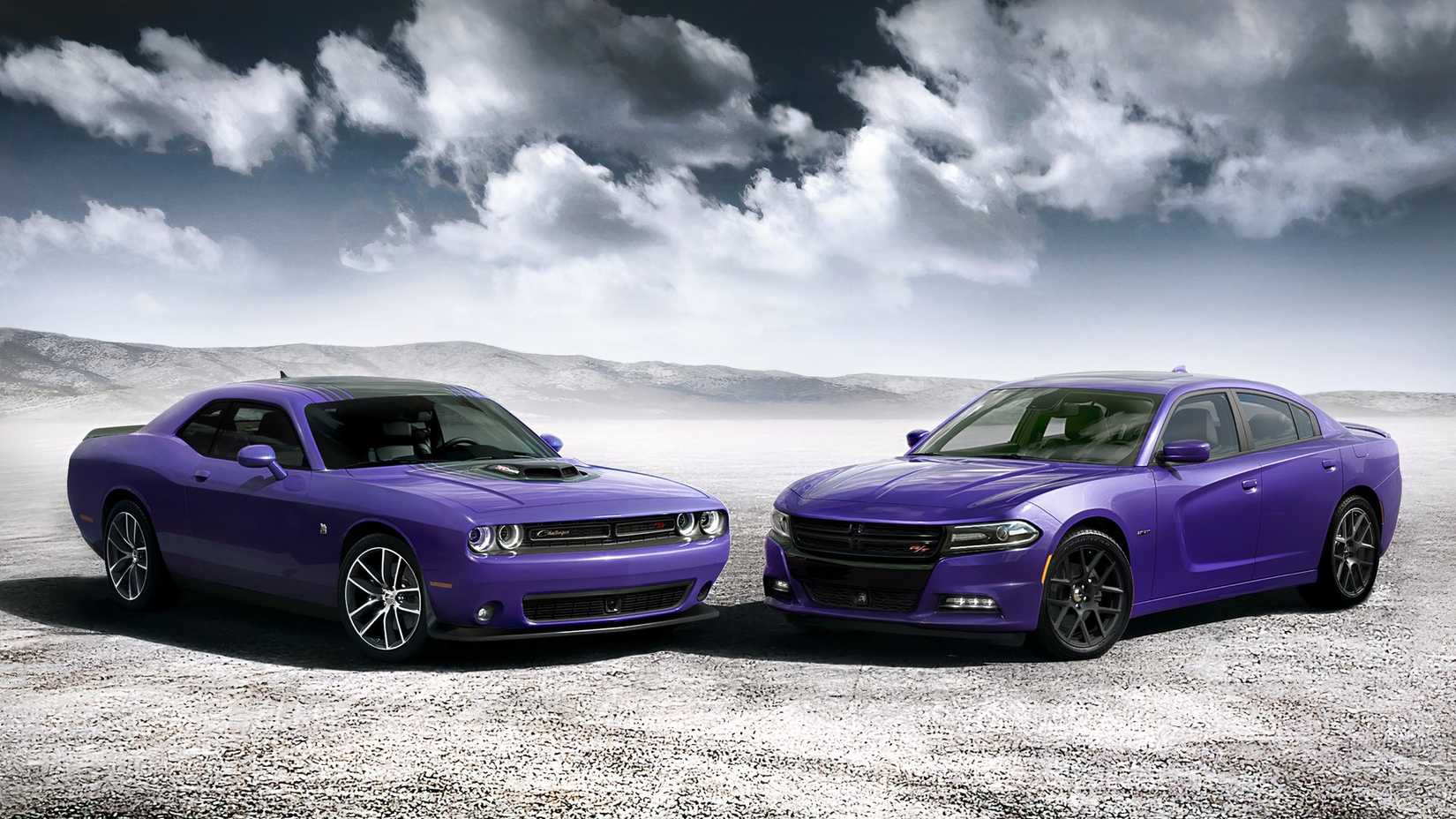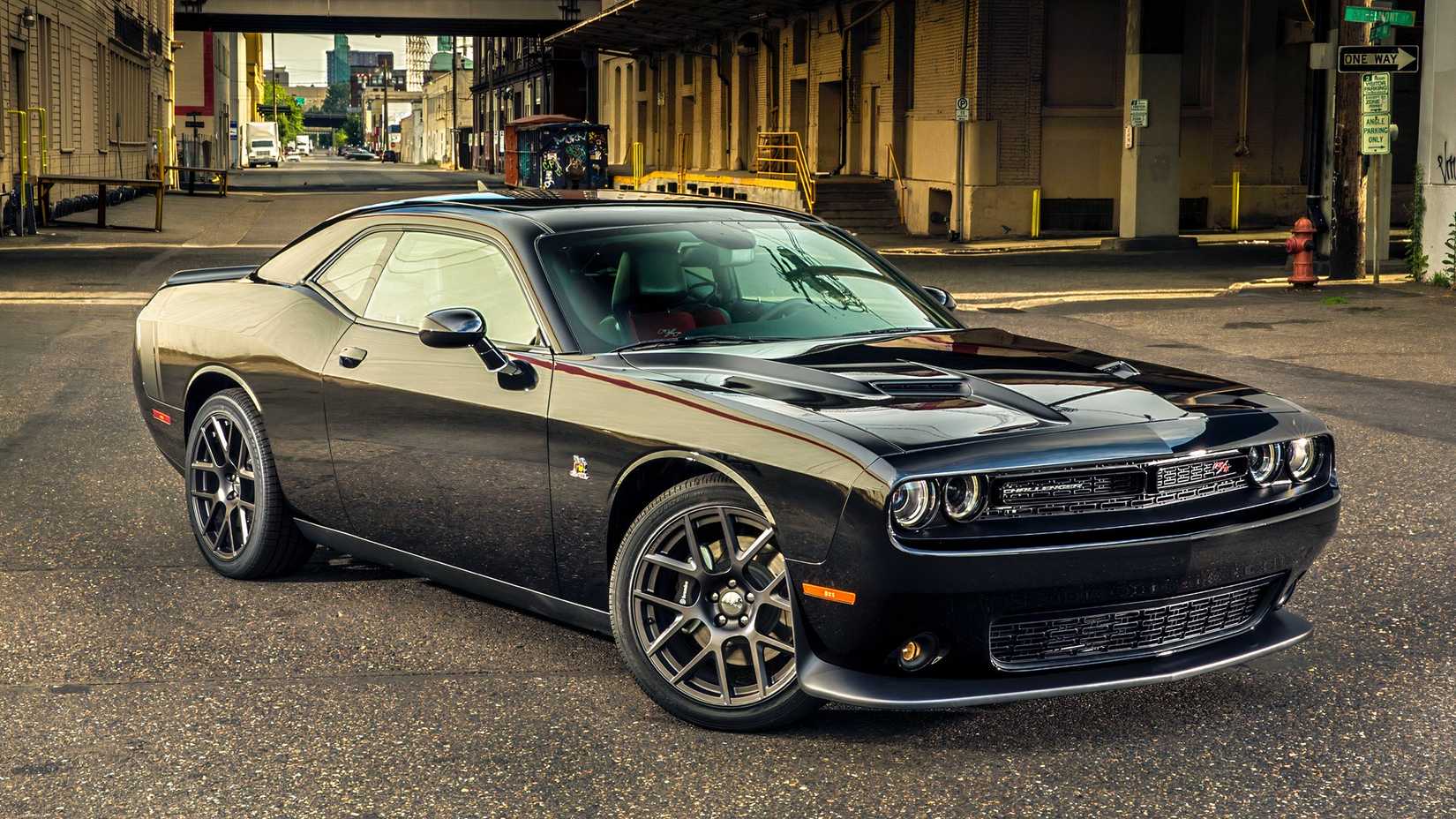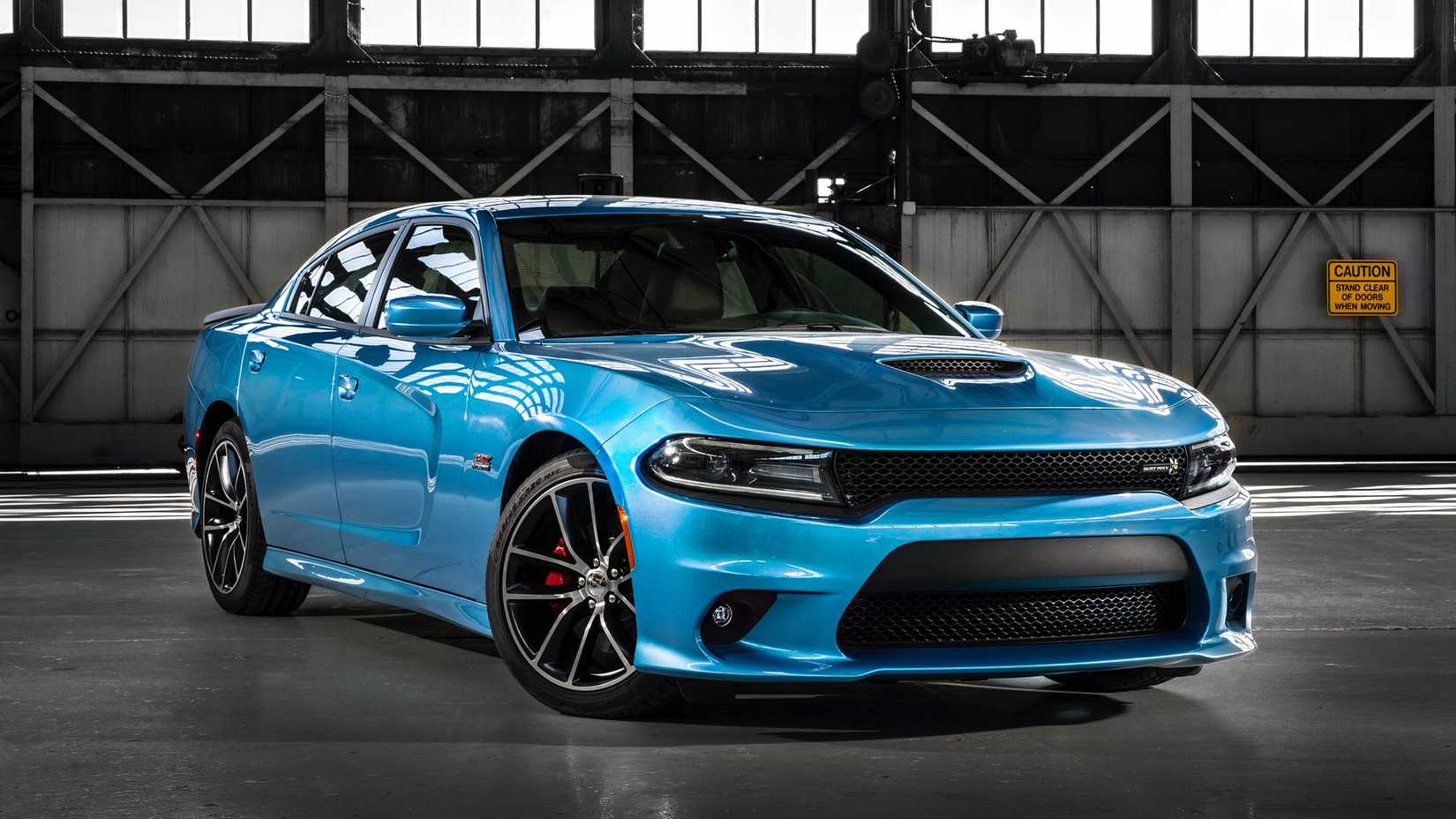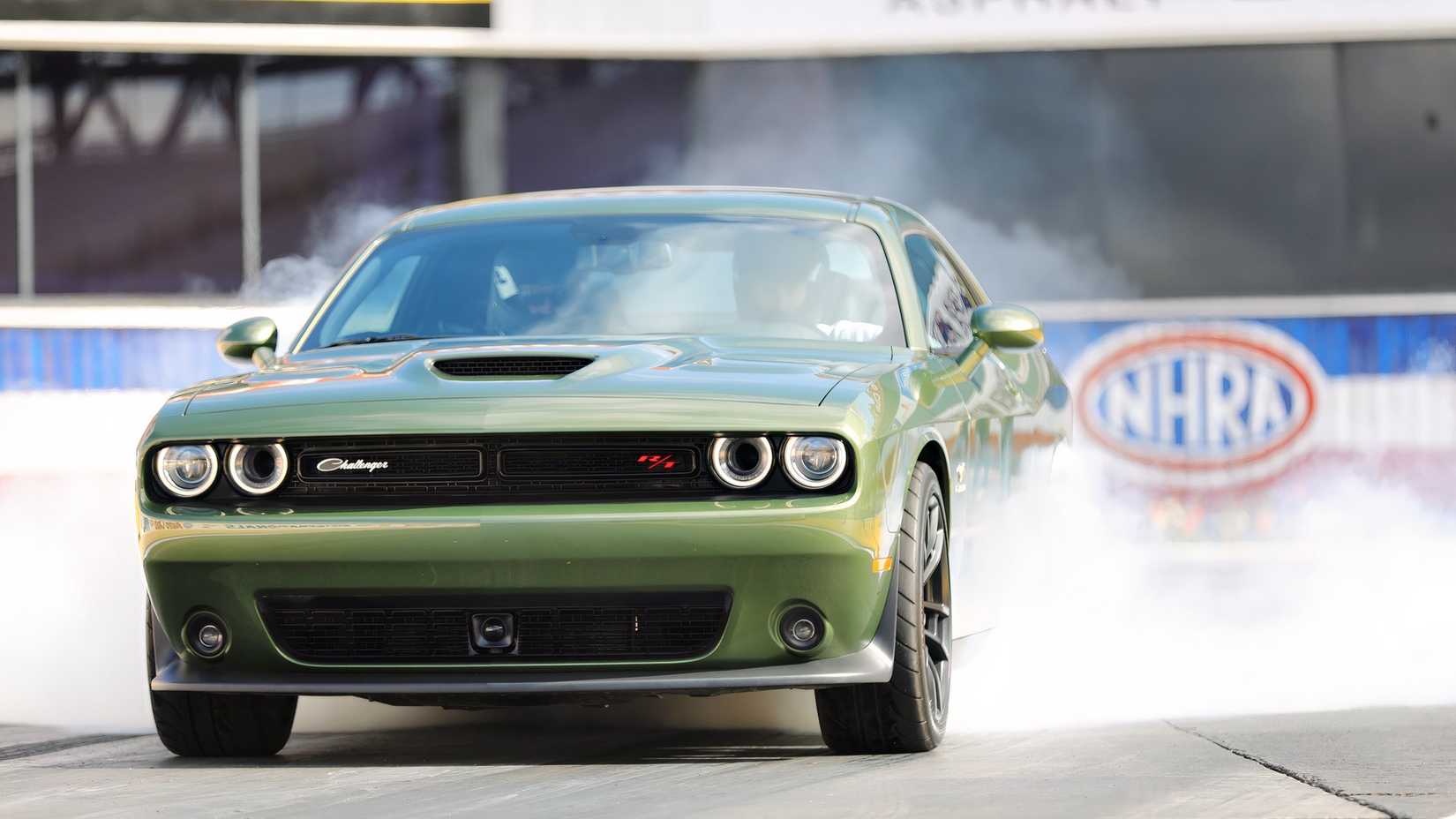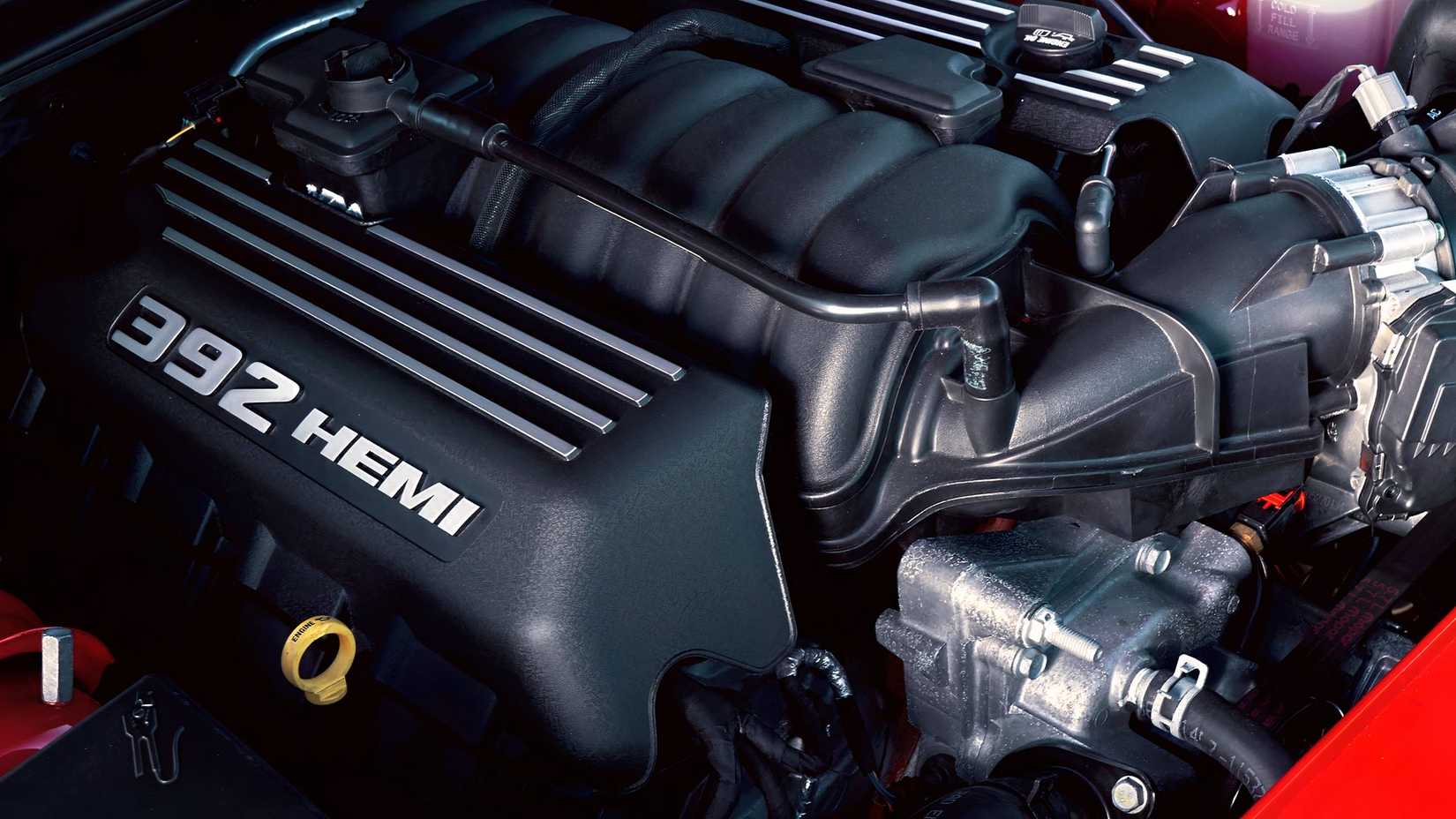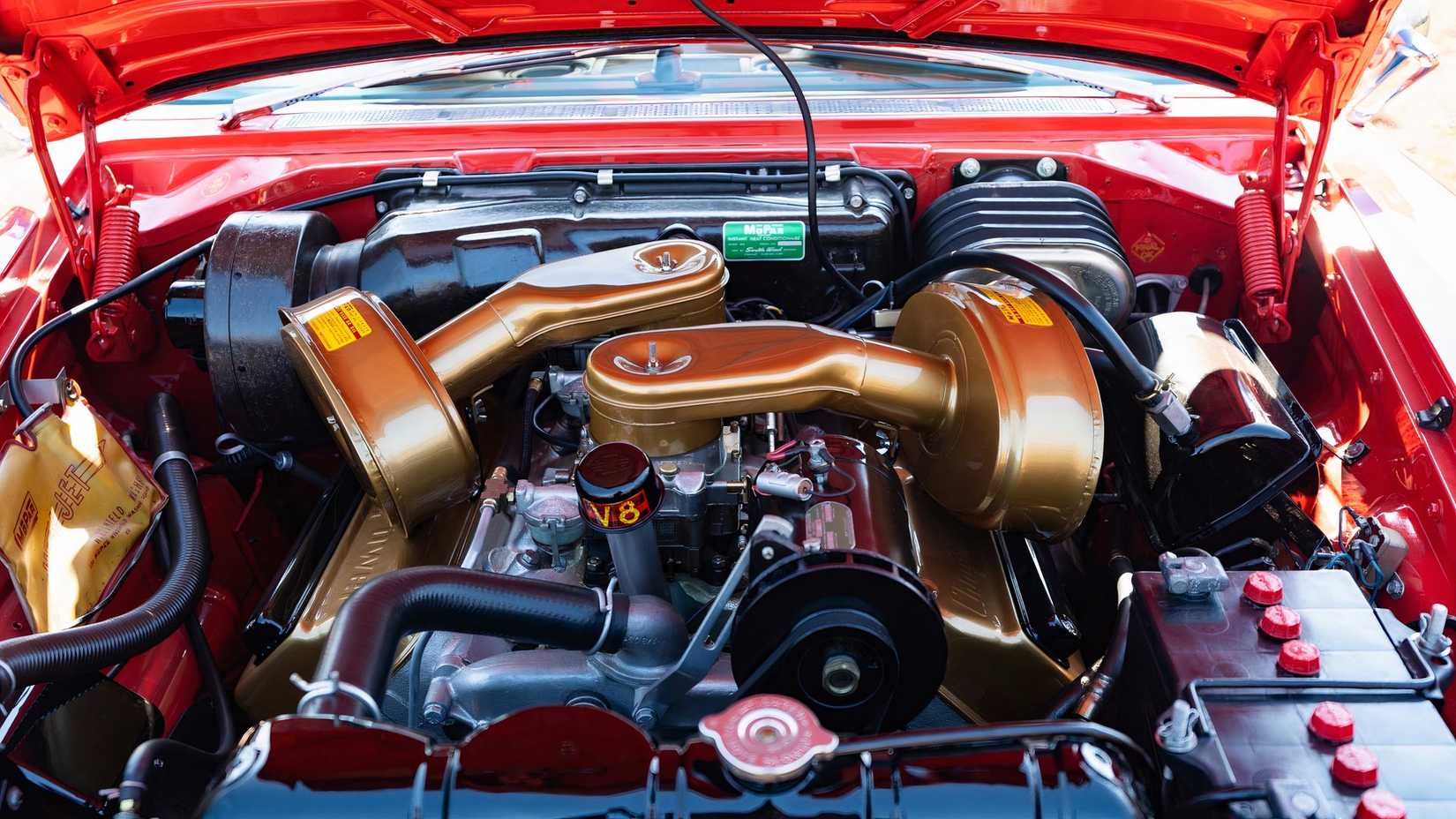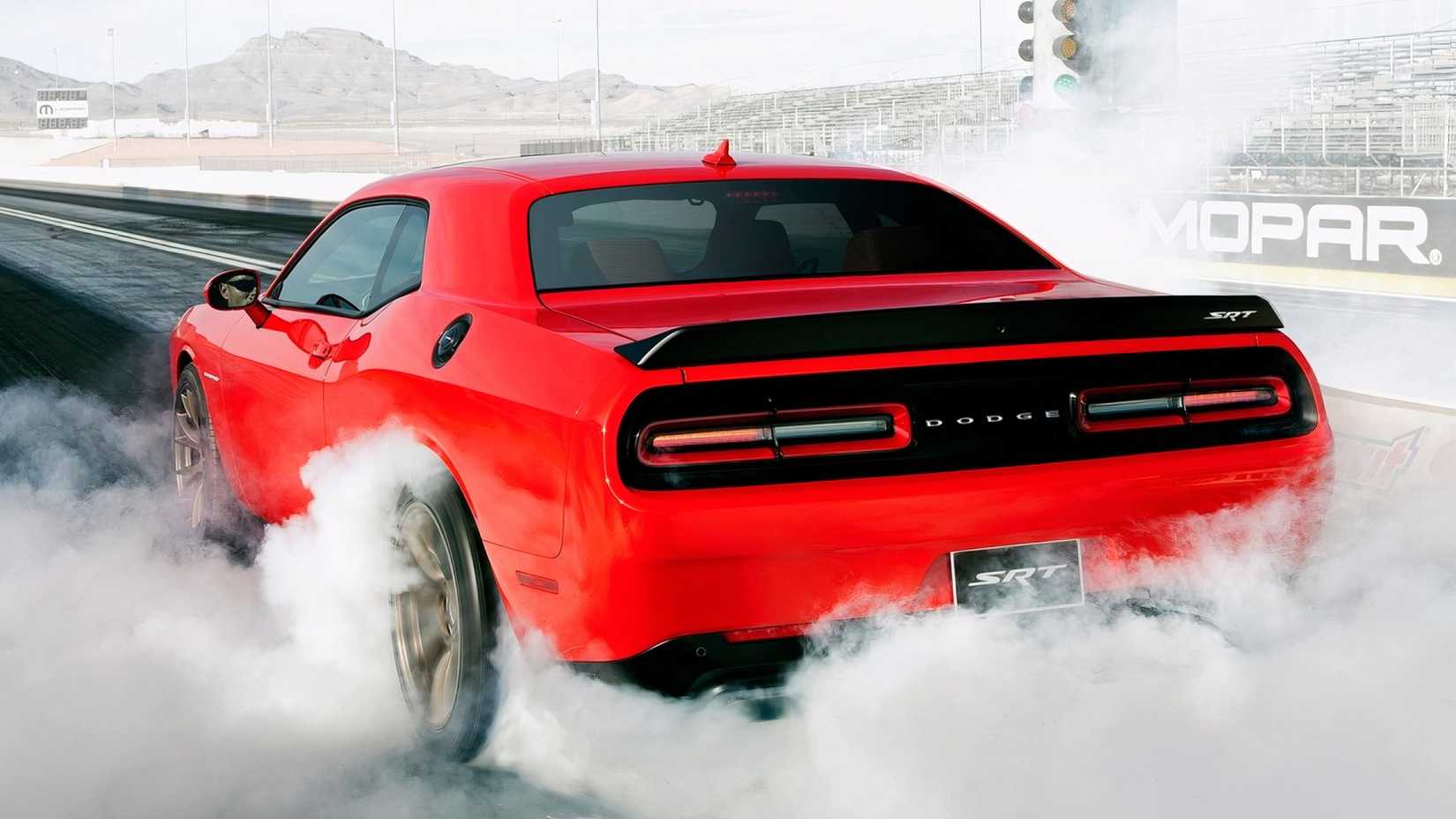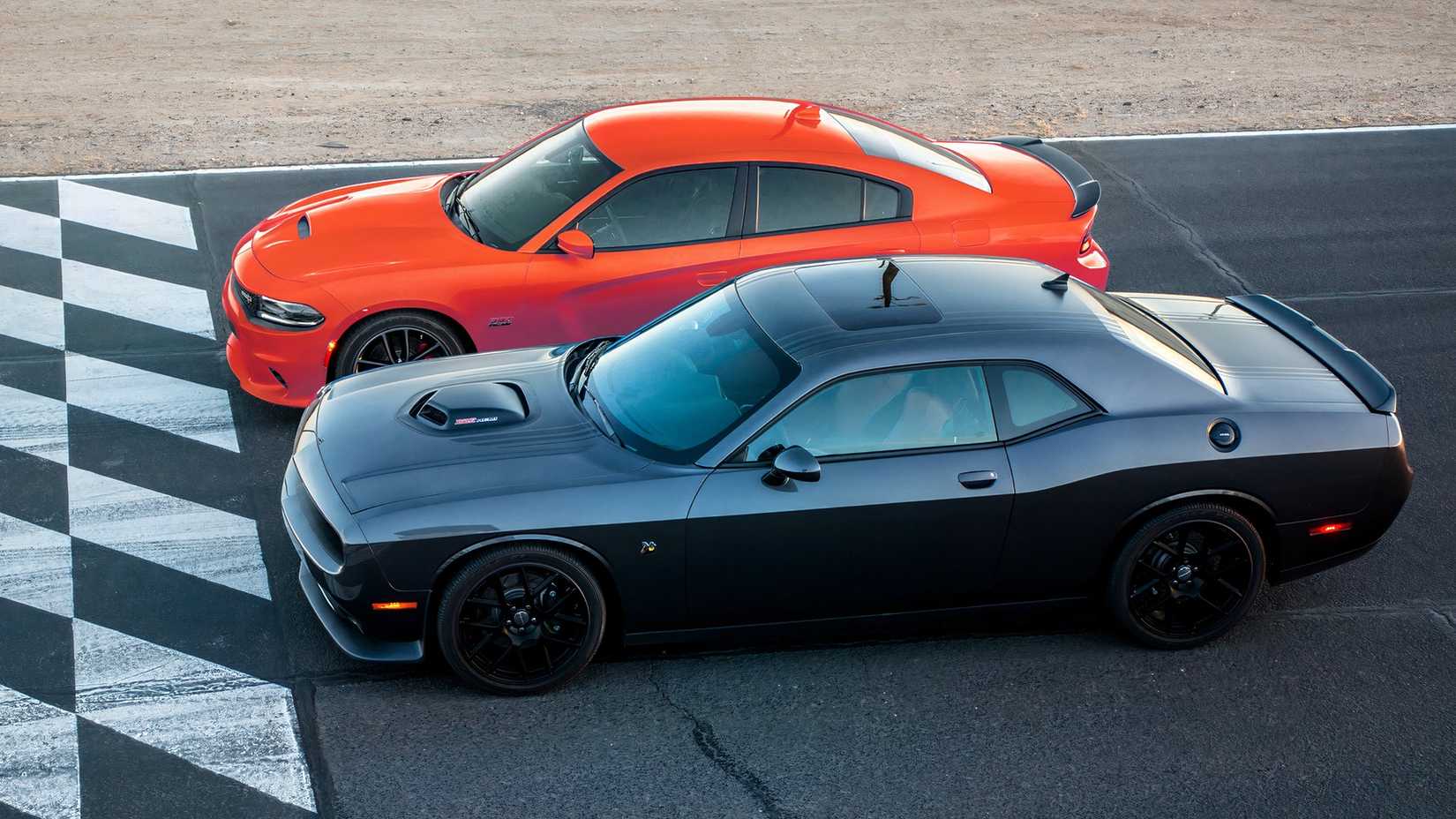The Dodge Scat Pack is both infinitely awesome and steeped in mystery as a sort of high concept or advanced theory that goes over most people’s heads. Much like how the Hanson Brothers in Slap Shot were in awe of “old-time hockey,” even though they didn’t fully understand it, many muscle car fans are a little fuzzy on the Scat Pack while recognizing its greatness. Originally, the Scat Pack wasn’t a trim, but rather a designation Dodge gave to its high-performance cars, so buyers knew they were getting a street beast.
Dodge resurrected the Scat Pack for the modern era, where it did, in fact, become a trim of the rebooted Challenger and Charger, but was still an indicator of exceptional performance. The new Scat Pack lineup was the baddest of the bad naturally-aspirated cars Dodge had to offer, and they were unrivaled on the streets by anything Chevrolet or Ford had to offer. Think of the Scat Pack as a seal of approval from Dodge, that any car bearing the bumblebee logo is guaranteed to put a smile on the driver’s face as he or she blows away the competition.
The Scat Pack Attack Makes A Comeback
When the iconic 426 Street Hemi was unleashed for consumer use in 1966, it was available to every intermediate Mopar, meaning it could be ordered in a Plymouth Belvedere station wagon or Dodge Coronet four-door sedan. By 1968, Chrysler put an end to the madness and told its divisions that the 426ci Hemi V-8 could only be equipped with specially designated muscle cars.
For Dodge, this meant the Charger and Coronet R/Ts, top Dart trims, as well as the Super Bee. They took it a step further by creating the Scat Pack to help identify their most killer rides, which bore a mechanized bumblebee emblem and bumblebee stripe across the back end. Not all Scat Pack cars had Hemis, with most packing 383s or 440s, and some, like the Dart Swinger with a 340, but they were guaranteed to be 14-second or faster rides.
Dodge Scat Pack Family
- 1968-1971 Charger R/T
- 1968-1970 Coronet R/T
- 1968-1970 Dart GTS
- 1968-1970 Dart Swinger
- 1968-1971 Super Bee
- 2015-2023 Challenger
- 2015-2023 Charger
- 2024-2026 Charger Daytona EV
In 2015, Dodge increased the output of their 6.4-liter Hemi V-8 to 485 horsepower, making it the most raging naturally aspirated muscle car engine available. It was to the modern era what the 426 Hemi was to the classic era in that it was unbeatable. This seems like a good time to bring back the Scat Pack as well, so the 2015 Challenger and Charger received trims designating them as such.
Here’s where some of the confusion comes in, however, because there were several models with the 6.4-liter V-8 that had bumblebee emblems, like the Challenger SRT 392, but weren’t officially considered Scat Pack cars. Also, the Charger Super Bee, which saw reboots in 2007 as well as 2012, was boldly decked out with bumblebee logos, but was never officially considered a Scat Pack car.
Challenger Scat Pack
Debuting in 1970, the OG Challenger was one of the most amazing cars of the Golden Age of American Muscle, but its late entry meant it only got two solid years before detuning robbed it of its glory. When Dodge relaunched it in 2008, they nailed the design that took the classic Challenger styling and updated it with some modern flair, making it one of the most stunning cars of the new muscle car age. The first-gen Challenger may have been an honorary Scat Pack car, but the third-gen made it official. The 2015 Challenger R/T Scat Pack came standard with a 6.4-liter Hemi 392 as well as a much-deserved bumblebee emblem. The R/T trim eventually went back to the 5.7-liter V-8, while the Scat Pack became a stand-alone tier until the Challenger was discontinued in 2023.
Charger Scat Pack
The Charger is Dodge’s greatest model and one of the most iconic American nameplates of all time. The second-gen Charger (1968-1970) was the defining ride of the Golden Age, especially when equipped with the 426 Hemi. It did, however, have a rough go in the 1970s and 1980s as a pseudo-luxury land yacht and then as a front-wheel-drive compact. When Dodge decided to bring it back as a four-door, many purists were alarmed until they got a look at it or jumped behind the wheel of one. Dodge pulled off the extra-doored styling with a bold, aggressive design, and had the sense to equip it with a 5.7-liter Hemi V-8. The new Charger, released in 2006, brought muscle back to Mopar, and when the R/T Scat Pack trim hit in 2015, returned it to King of the Streets status as well.
Scat Pack Performance Is More Than A V-8 Badge
The next-gen Scat Pack Challenger and Charger come standard with a 6.4-liter Hemi V-8, but they are so much more than just an engine upgrade from lower trims. They also get performance-tuned suspensions with stiffer springs and, with the Widebody variants, adaptive damping, performance shocks, as well as a wider track. That added performance is accentuated with drive modes like launch control and line lock to literally fire these cars out of a cannon.
To help tame that power, Scat Packs also come with six-piston Brembo brakes and a performance slip differential. On the inside, Scat Packs are packed with tech like a bigger infotainment screen and racing gauges, as well as the luxury of heated seats. All of this awesomeness comes with the very cool Scat Pack badging and more aggressive body details.
If this were an infomercial, this would be the “but wait, there’s more” moment as the Scat Pack is beyond mechanical and appearance upgrades. It’s a Dodge guarantee that any car bearing the bumblebee logo is a bona fide butt kicker. The original Scat Pack cars were promised to run a quarter-mile in the 14s, with the 426 Hemis and 440 Six Packs solidly in the 13s, but the new generation of Challengers and Chargers are 12-second rides straight from the factory.
Back in the day, that was a factory drag car kind of acceleration, and prior to the 2015 introduction of the Scat Pack trim, it took some serious wrenching to get that level of performance out of a Dodge muscle car. The Scat Pack designation is an insurance policy for never getting smoked, giving the driver peace of mind that he or she is behind the wheel of a street apex predator.
6.4-Liter Hemi 392 V-8
Chrysler developed the 6.4-liter Hemi V-8 as a 525-horsepower crate engine in 2005, and then made a slightly tamer production version in 2010, which initially went into the Challenger SRT8. The early engines were rated at 470 horsepower, but got a 15-pony bump in 2015, which conveniently coincided with the Scat Pack reboot. The engine can be stylized on fender badging as “6.4L HEMI” or “392 HEMI” for its cubic inch displacement, and regardless of Scat Pack status, usually features the bumblebee mascot. The Challenger 392 Hemis came standard with a Tremec six-speed manual transmission, while the Chargers were only offered with an eight-speed automatic. Conventional wisdom says that a manual is better for street applications, but the automatic with manual shifting paired with the 6.4-liter Hemi V-8 delivers superior performance.
Hemi Forged In Fire Power
The fact that 6.4 liters is the non-metric equivalent of 392 cubic inches is no accident, as Dodge was giving another nod to Mopar heritage with the Scat Pack V-8. Way back in the 1950s, Chrysler developed the FirePower line of V-8s that were the first to feature hemispherical combustion chambers. These engines were never marketed as Hemis, but they certainly were. The baddest of the bunch was the 392ci FirePower V-8 with dual-quads that produced an eye-popping 390 horsepower in the 1957 Chrysler 300C. For the time, that kind of performance in a car was like sorcery or science fiction, and the 300C was widely regarded as the fastest car in the world. The 392 Firepower laid the groundwork for the 6.4-liter Hemi, and the 300C’s street swagger inspired the Scat Pack.
Scat Pack Vs. Hellcat
Another interesting development for Mopar Muscle in 2015 was the creation of the completely bonkers 6.2-liter supercharged Hemi Hellcat V-8. Using the same bore size as the 6.4-liter and the stroke of the 5.7-liter, the Hellcat added a twin-screw supercharger for unreal performance. Right out of the gate, the Hellcat generated 707 horsepower, but variants over the years have taken that to over 1,000 furious ponies.
Both the Challenger and Charger have been Hellcat-enabled since 2015, while only the Challenger was bestowed the Demon version of the 6.2-liter supercharged Hemi. All of these Hellcat/Demon cars come with two key fobs, a black one that limits the output to around 500 horsepower and a red SRT one that unlocks the full power.
6.2-Liter Hemi Hellcat/Demon Supercharged Rides
- Ram 1500 TRX – 702 HP
- Dodge Challenger/Charger SRT Hellcat – 707 HP
- Jeep Grand Cherokee Trackhawk – 707 HP
- Dodge Durango SRT Hellcat – 710 HP
- Dodge Challenger/Charger SRT Hellcat – 717 HP
- Dodge Challenger/Charger SRT Hellcat Redeye – 797 HP
- Dodge Challenger Charger Hellcat Jailbreak – 807 HP
- Dodge Challenger SRT Demon – 840 HP
- Dodge Challenger SRT Demon 170 – 1,025 HP
It’s obviously not fair to compare Hellcats with Scat Packs on performance alone, but there are areas of contrast that make a case for the naturally aspirated muscle cars. The first is price, with a 2015 Challenger R/T Scat Pack starting at $38,495, while the same year, the SRT Hellcat was almost $60,000. In 2023, the last year for any of these awesome rides, the Charger Scat Pack was around $30,000 cheaper than the SRT Hellcat Widebody. This is actually related to performance because, not only don’t most people need 700+ horsepower, but a great number of them absolutely shouldn’t have a car that powerful. Even a 12-second Scat Pack is too much for some, so an 11-second Hellcat will probably end up wrapped around a telephone pole or sheared in half by one.
Modern Scat Pack Proves Dodge Still Owns The Streets
During the Golden Age of American Muscle, Mopar ruled the streets thanks to a comedy of errors from Ford and GM. Right before the 1964 Pontiac GTO launched the muscle car craze, GM decided that none of its divisions could equip intermediate models with engines bigger than 400 cubic inches, effectively ceding dominance to Dodge and Plymouth. Meanwhile, Ford was late to the game with their big-block muscle car engines, and even when they got the 428 and 429 Cobra Jets going in the late ’60s, they were some weak-sauce sub-400-horsepower V-8s. The Dodge Scat Pack cars with 440s and 426 Hemis could destroy anything the other automakers had to offer, until 1970, when GM lifted its silly big engine ban, but even then, Mother Mopar still ruled.
While the Scat Pack’s first reign as street royalty was partially based on good fortune, the reboot was designed deliberately for supremacy. In 2015, the Challenger and Charger’s natural enemies were the Chevrolet Camaro as well as the Ford Mustang, both of which had naturally aspirated engines in the 425-horsepower range. Dodge specifically targeted those cars with the 485-horsepower 392 Hemi Scat Pack cars to reclaim the streets for Mopar Performance. Of course, the Mustang now has a 500-horsepower version of the 5.0-liter Coyote V-8, but the ICE Challenger and Charger have been discontinued, so there’s no battle to be fought anymore. It should be noted that the Dodge Charger Daytona EV has a 670-horsepower top trim named “Scat Pack,” so the tradition carries on with battery power.


